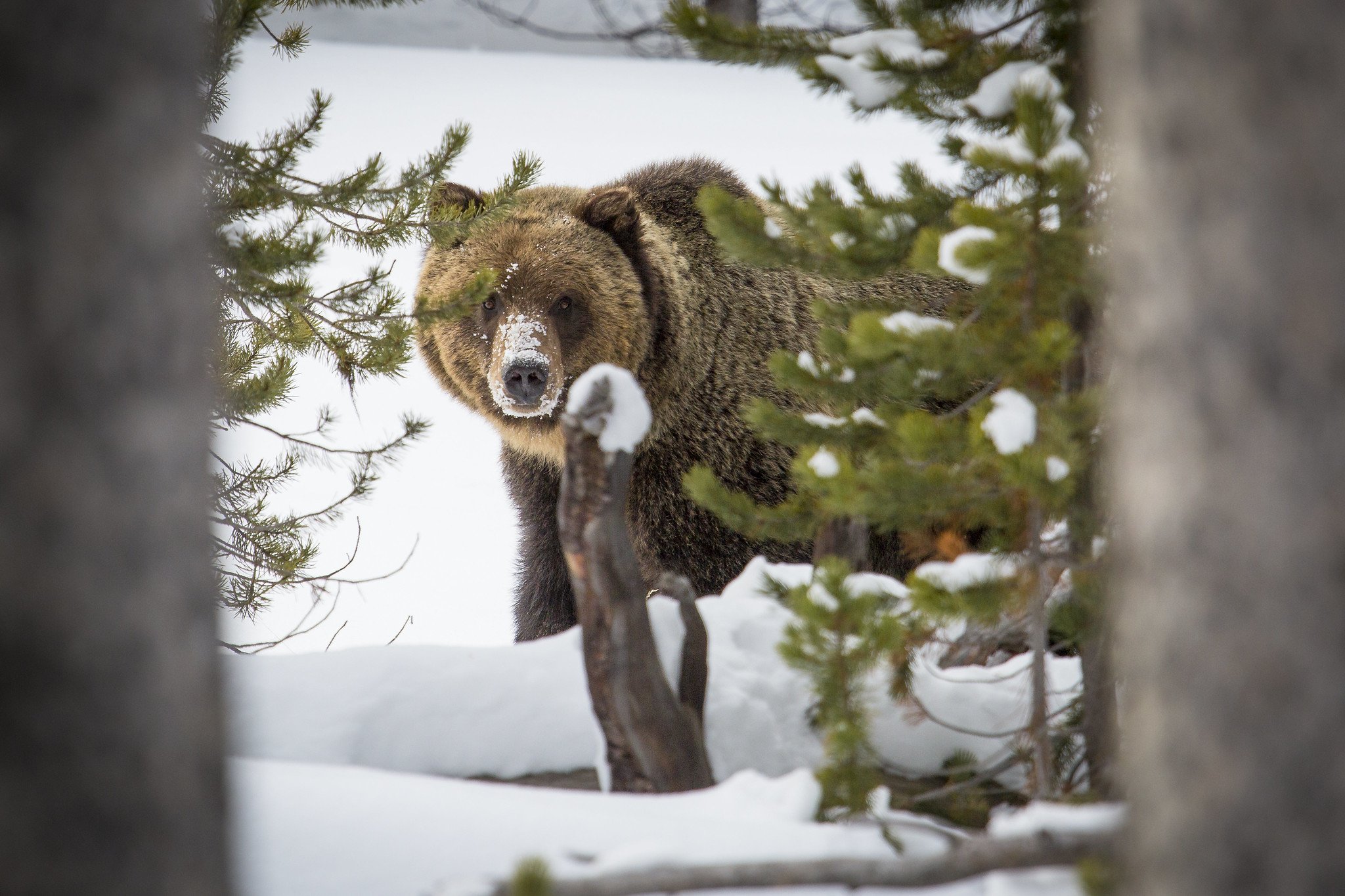
Securing Forest Habitat for Grizzly Bears
Grizzly bears are perhaps the most iconic symbol of a wild Yellowstone.
As a large and wide-ranging omnivore, they play a vital role in keeping the Greater Yellowstone Ecosystem in balance.
Despite their importance to the ecosystem, grizzly bears were near extinction in Greater Yellowstone during the mid-twentieth century. It took decades of persistent work from many organizations, agencies, and landowners to bring the species back to healthier, more stable numbers. Today, it is estimated there are just over 1,000 grizzly bears living in the Greater Yellowstone Ecosystem, making grizzly bear conservation among the most significant wildlife conservation success stories of the region.
While the story of grizzly bear conservation represents a huge win, the species does still face significant challenges across Greater Yellowstone. Habitat loss, conflict with humans, and a lack of connectivity between populations all present threats to the long-term success of grizzly bears. One specific predictor of grizzly mortality is simply the proximity of human development, such as roads that bisect bear habitat. Bear survival rates improve in correlation to factors like elevation and remoteness, suggesting secure habitat is key to bears’ ability to thrive.

The Greater Yellowstone Coalition is committed to ensuring grizzly bears thrive well into the future. To guarantee grizzlies have the space and resources they need to sustain them, GYC has partnered with the U.S. Forest Service on an innovative restoration effort designed to provide more secure habitat for bears.
The partnership involves a review of all five national forests surrounding Yellowstone National Park with a goal of identifying and subsequently decommissioning illegal, unnecessary, or unsuccessfully closed roads and restoring the roadbeds back to their natural, pre-disruption state. The roads are prioritized for restoration according to their potential to benefit grizzlies and other wildlife, such as elk. The partnership is helping the forests tackle a backlog of projects while providing more secure habitat for the region’s iconic wildlife.
This work is ongoing. GYC and the Forest Service have each agreed to commit $125,000 to the project annually for its duration, and, using this funding, Forest Service crews work each summer to restore habitat in one of the five national forests throughout the Greater Yellowstone Ecosystem.
The restoration work involves recontouring roadbeds to a more natural slope, placing groundcover to mimic natural vegetation, replacing old culverts, fixing stream channels, installing rock barriers to protect project sites from illegal use, and replacing or bolstering gates.
The hard work is paying off. Within each field season forest crews are able to restore many dozens of miles of decommissioned roadways back to a natural state, and each mile of road restored in turn secures 400 acres of habitat for bears and other wildlife. Once restoration of a road segment is complete, areas that once represented a potential source of mortality for bears and other forest inhabitants are now once again vital habitat that can support a wide variety of species. Already, the project has secured tens of thousands of acres of habitat.
This productive partnership is a model for how organizations like GYC and agencies like the Forest Service can effectively collaborate to achieve common goals that benefit conservation, communities, and wildlife.


